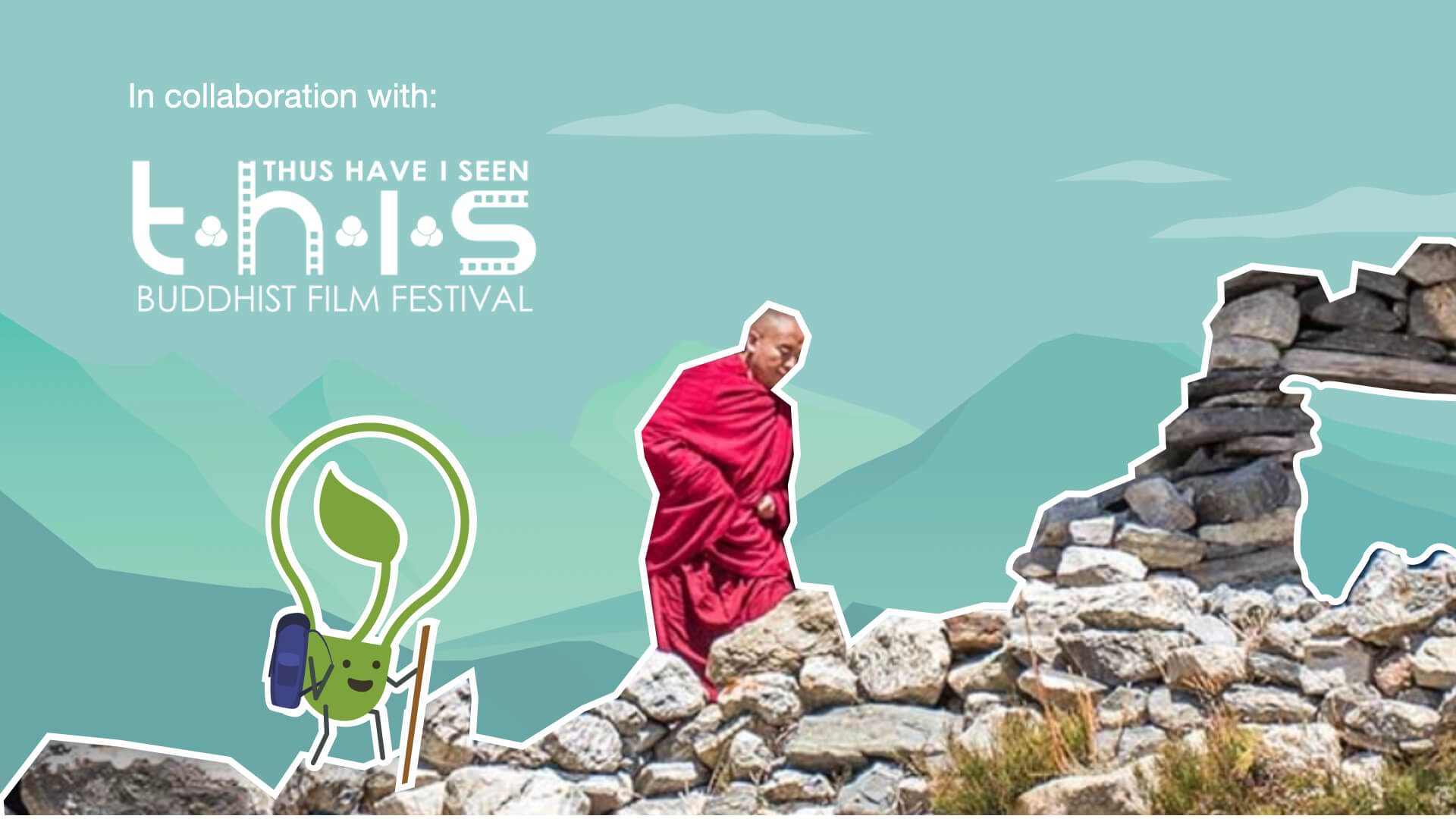Buddhist Film Reviews is a partnership series between HOL & THIS Buddhist Film Festival 2021 (25 Sept – 8 Oct’21). Themed “Open your mind”, THISBFF 2021 features 15 thought-provoking documentaries and feature films from 12 countries.
TLDR: ‘Wandering… But Not Lost’ is a documentary about Yongey Mingyur Rinpoche’s solitary journey in India and Nepal as he explored different terrains and places while centred on his awareness.
Last year, I bought a book by Yongey Mingyur Rinpoche titled In Love With the World. The book chronicles his experience wandering through India and Nepal as a way to practice mindfulness. Mingyur Rinpoche had for a long time intended to go away quietly for a personal three-year retreat in the world and finally realized it in 2011. This book on his journey is now translated into a visual form in the documentary Wandering… But Not Lost.
The book is not so much a travelogue into the different Indian and Nepali provinces but about the monk’s inner journey. Although his body is moving from place to place, there is the reminder for us to keep recollecting our awareness, like he did, no matter where we are and what we are doing.
As a tulku, Mingyur Rinpoche was born into privilege in the monastic aristocracy of Tibetan Buddhism. A tulku is a reincarnated lineage holder in Tibetan Buddhism, who as a child is raised and taught by students of his predecessor to be groomed into a teacher of Buddhist scriptures and meditation to continue the tradition and practice. With all these identities and expectations put upon him, Mingyur Rinpoche wanted to discover his true mind by letting go of all of his privileges and identities. He sought to do so by living as a wandering yogi.
Mingyur Rinpoche has been teaching internationally to both the monastic and lay community before he brought his plan for solitary retreat into fruition.
Heeding his late father’s advice, Mingyur Rinpoche slipped away in the middle of the night out of his home monastery – Tegar Monastery in Bodh Gaya to take a train to Varanasi, without anyone’s notice.
All Buddhist traditions practice mindfulness retreats but each may do it differently due to various cultures and environments. In Tibetan Buddhism, monks usually retreat to a remote cave to practice solitary meditation for a few years. He is tended to by an attendant who will help him with his basic necessities such as food. As a tulku, Mingyur Rinpoche had his taste of a solitary retreat in a cave, but not out in the world on his own. He had been inspired by the likes of Shakyamuni Buddha and Milarepa.
At the start of the adventure, the young abbot faced challenges immediately at the train station. He had not been used to handling money as his attendant was always the one buying tickets for him. He bought a ticket to the lowest class cabin, which he was also unaccustomed to. He sat amongst the crowd and meditated to the sound of the train and was mindful of his aversion towards the body odours found in every corner.
The real test came when Mingyur Rinpoche ran out of the few thousand rupees he brought along with him when he was at Kushinagar.
Kushinagar was the place where the Buddha entered parinibbana. It was also the place Mingyur Rinpoche nearly died. He fell ill from food poisoning, having begged for his first meal at a stall he once frequented. Debating whether to call for help or to allow things to be, Mingyur Rinpoche chose the latter and sat weakly against a wall to meditate on awareness.
The documentary features majestic views of the Himalayan mountains and valleys, as well as Indian and Nepali holy sites as Mingyur Rinpoche travelled and ate by depending on the kindness of others. The film included interviews with him about how he faced challenges by reminding himself to pay attention to awareness. Mingyur Rinpoche added that most people meditate to gain the feelings of peace. But the true purpose of meditation is to see awareness itself. He described awareness as a diamond sitting within us waiting to be discovered. But all we see are the coloured backgrounds that the diamond is placed against.
Mingyur Rinpoche’s journey took a turn for the better after his near-death experience in Kushinagar.
His body became weak, but his awareness brightened and expanded. He felt he was everywhere but yet nowhere. Saved by a retreatant on a pilgrimage in India at Kushinagar, Mingyur Rinpoche recovered from the food poisoning episode and emerged with joy and freedom as he wandered the streets and the mountains, feeling at home everywhere he went.
The documentary is a reminder for us to pay attention to the diamond within us. We can be in the city and our hearts are in the mountains. Or we can be in the mountains and our hearts in the city. But wherever our bodies may go, it is our awareness that is the real beauty against the backdrops of our own lives.
Watch the Trailer before you book your tickets!


